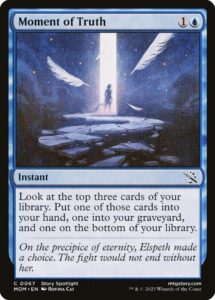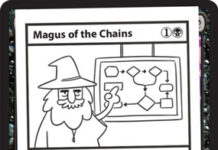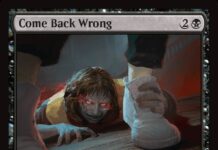Let’s talk about Edgar Rice Burroughs.
What’s that? He has nothing to do with Magic? I disagree. Burroughs wrote the Tarzan series, the Pellucidar series, and the John Carter series, which are among the prime ancestors of modern fantasy stories. This influence would be enough to secure him a place in the pantheon of fiction, but his skills are also recognized in a very specific way. Burroughs was not a particularly good writer in the sense of craft. His prose and his descriptions were sufficient to set the scene, but very simple and straightforward with not much innovation in language use or technique. His works do not have very deep psychological components. But he was an excellent storyteller. All his stories have dynamism and a kinetic quality, always moving forward and bringing new events, and they make you eager to see what happens next.
I have come to believe that if you can only be one of those things – either an excellent prose-smith but a mediocre storyteller, or an excellent storyteller but sufficient writer – you should choose the storyteller route. Based on the current Phyrexia storyline, Magic seems to have decided the same thing. The web stories around the set releases have been particularly frequent and lean much closer to the Burroughs style of action. Someone’s always going somewhere, and usually fighting; there are twists galore, and villains jumping out of corners. It feels odd if, say, you long ago read the Lorwyn and Shadowmoor stories, or Lynn Abbey’s novel Planeswalker, and thought the game might sometimes flirt with weird fantasy. But this way fits better – Abbey’s particular brand of moodiness doesn’t fit with the game itself, and particularly not with the style of art and character concepts they’ve (mostly) chosen in recent years.
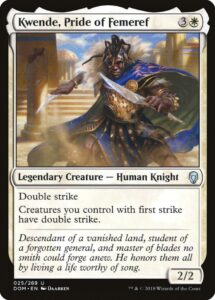
So their goal seems fairly clear; now that March of the Machine is here, and we can see the shape of the whole thing, how did they do? If you just look at the cards, they did all right, including in March of the Machine. Its art is high in quality and its concepts are generally compelling, although I’ve noted some printing oddities in the past couple of sets, and there are some notable ones here. In particular, some cards’ images look “pixelly”, for lack of a better term, and seem oddly fuzzy to a casual glance. Still, when you open a card that shows a herd of triceratops charging the field like the Ride of the Rohirrim, it’s hard not to smile. I’ve been saying since Kaldheim that if you engage with Magic as individual cards portraying individually interesting characters or moments, you’ll probably do okay.
However, March of the Machine has flavor difficulties stemming from the fact that it has an enormous amount going on, across a comparatively small group of cards. The set has to portray Phyrexians invading three dozen planes (no, really). The set also has to portray at least a few of those planes’ inhabitants and the diverse ways they defend themselves; the battle cards themselves help with this, of course. While their front sides’ art is hard to parse – I thought we learned our lesson from the first Kamigawa block’s flip cards – having each one transform into something that defends the plane is a good gimmick, and provides welcome representation to the planes that are unlikely to be used as full settings. The set has to give some indication of those planes’ nature, and apparently with only one set of style instructions. The unique physical features of, for example, Ikoria’s monsters, Tarkir’s dragons, and Muraganda’s dinosaurs are all visible, but normally a plane has a signature art style when it’s the focus of a set, and since no plane is the sole focus, they all look rather similar to a casual reading.
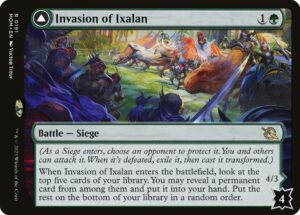
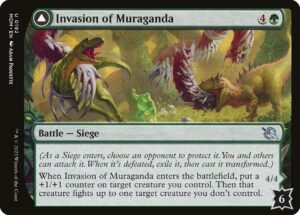
And of course, March of the Machine has to portray the battle on New Phyrexia and how Elspeth, Chandra, Teferi, Wrenn, and the others finally come face-to-face with Elesh Norn, and the fallout for New Phyrexia and the Multiverse. And after everything in the last paragraph, there’s not very much card space left for this. The set has the normal number of Story Spotlight cards, but when its whole premise is Multiversal chaos, they stand out less and are more confusing than usual.
Overall, the entire thing just feels very rushed and crowded. There is enough background to theoretically generate enough flavor content for multiple sets, and it has the progression that an old two- or even three-set block would have had, and perhaps more. But the resultant content is jammed into a single set, a set where 281 of its cards are available in draft boosters. For reference, that’s slightly less than Amonkhet’s 287 cards; and Amonkhet had much less story to tell, and much more flavor text. And some March of the Machine cards would, in a proper storytelling sense, not belong in a hypothetical block at all. For example, while Wary Thespian and Furtive Analyst have mechanical designs made for March of the Machine, their concepts should have been in Streets of New Capenna and Strixhaven respectively. There is no tension or suspense in foreshadowing the invasion of New Capenna when the very next card in the booster might show the battle in progress. It would have been especially strong in Furtive Analyst’s case, because Strixhaven was one of the sets that had no praetor in it – if given appropriately understated art and flavor text, it could have been an ominous hint at the breadth and scope of Elesh Norn’s plan.
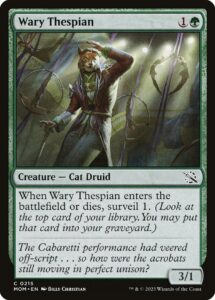
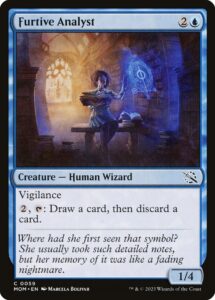
This overcrowding also makes it hard to discern the reason why some story elements were de-emphasized or excluded – to be precise, it makes it feel even more arbitrary than usual creative choices. When one of the set’s first previews is a Phyrexianized Heliod, and one of the main planeswalkers is his former champion who later defeated him, you’d expect this to play a role in the story. Spoiler alert: it doesn’t. We’ve known for over two years that Kasmina is gathering forces to oppose some looming threat, notably recruiting the Kenrith twins to the Strixhaven academy. She doesn’t appear in March of the Machine at all, unless you count the card from one of the Commander decks that references her. Either she’s anticipating something even worse, or whatever she did during the war was deemed not to warrant an appearance. Garruk is a character who combines physical and magical prowess with an understanding of the darker side of predation – in other words, how a praetor like Vorinclex might think and how to fight him. Not to mention that he specializes in hunting down and destroying other planeswalkers, presumably including ones who are Phyrexian generals. But we’ve seen neither hide nor hair of him since the 2021 Core Set.
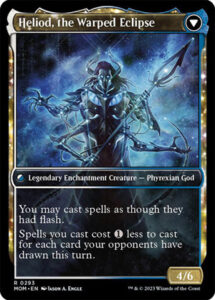
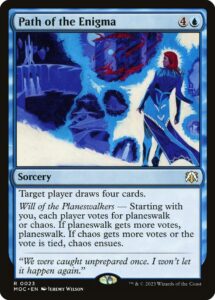
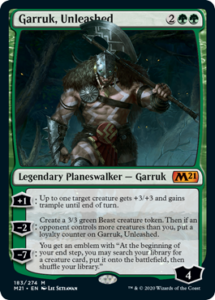
I’ve spoken before about apocalypse fatigue and the overuse of the planar cataclysm tropes. And it turns out that these problems don’t get any better when you extend them to multiple planes; nor does trashing the plane that was trying to trash other planes cancel it out. My former Card of the Day colleague BMoor once commented that as a fan of the original Mirrodin block, he found the Scars of Mirrodin block very confronting; I hope that wherever he is now, he was sitting down when he learned about what happened to New Phyrexia in the final web story. But on the more optimistic side, this set might finally expose the shallowness and unfitness of apocalypse-of-the-month storytelling once and for all.
You can’t even claim that trying to be like Edgar Rice Burroughs leads you here – his writing, and that of other story-driven fantasy, is mostly about people, and their desires and fears. There’s no reason Magic couldn’t have a story arc about a personal quest for knowledge and growth that takes the protagonist to increasingly bizarre new worlds like Azgol and Xerex, in the vein of Ged’s long journey to Earthsea’s school of magic. There’s no reason it couldn’t tell a story with someone wandering the planes looking for a lost love, battling everyone they meet with mounting, misplaced anger and frustration, in the vein of John Carter trying to get back to Mars before the time lock on Dejah Thoris’ prison was set to open. There’s no reason it couldn’t tell a story where the main characters set out to shore up their own wealth, status, or confidence, and end up learning that the Multiverse is a stranger and more mysterious place than they realized, in the vein of Fafhrd and the Grey Mouser’s long friendship.
I would like to believe that March of the Machine is a hint of the potential of Magic’s future. I would like to believe that they included thirty-six battle cards to show that, as the old song goes, we’ve been through wonderful worlds and still have many more to go. I would like to believe that Phyrexia’s story is done, and there are new things awaiting that we can’t yet imagine. At the moment, though, it’s too hard to tell for all the noise and confusion and recycled tropes in the set. Perhaps we should start by believing, or at least hoping, that Wizards of the Coast learns the right lessons from March of the Machine.
